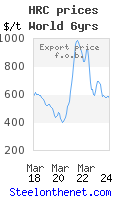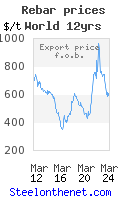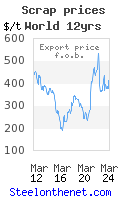In past ventures, safety a concern for owners of stricken mine [BlackDiamond]
CHARLESTON, W.Va. -- The billionaire bargain-hunter who last year bought the West Virginia mine where 12 miners died this week says he never stints on safety when he moves into troubled industries like textiles, steel and now coal.
The mine's checkered safety history, including some violations since an investor group led by Wilbur Ross purchased it, is facing harsh scrutiny since the Monday explosion trapped miners in a poison-aired section.
But many workers and even union leaders back up Ross's contention that, as he puts companies through tough reforms that can involve shutdowns of some operations and streamlining of others to improve efficiency and profits, he does not cut safety-related spending.
Ross told The Associated Press in an interview Thursday that his year-old International Coal Group Inc. invested more than $135 million to improve old equipment and make other safety improvements at its mines, including a $40 million advance on its purchase of Anker West Virginia Mining Co. so that improvements could be made quickly.
"We are extremely safety oriented," Ross said. "And while it is certainly true that we try to run efficient operations, first of all we have never, in any company in which we have invested, ever declined one penny of either expense or capex (capital expenditure) for any safety activity."
Ross, 68, led the group of investors who formed ICG in May 2004 by buying most of the assets of bankrupt coal operators Anker and Horizon Natural Resources. Anker included the Sago Mine, where a Monday morning explosion trapped the miners 260 feet underground.
Ross is a master bargain hunter, having formed Cleveland-based International Steel Group Inc. in 2002 after buying the remnants of bankrupt LTV Corp., then several other bankrupt U.S. steelmakers. When that industry was in the midst of a rebirth, he sold ISG to Dutch steelmaker Ispat International NV and LNM Holdings NV Now for $4.5 billion last year, forming the world's largest steel company, Mittal Steel Co.
Like steel, mining is booming again because of demand for coal-powered energy. And like mining, steel is a physical industry where generations of families have worked in mills, many more than 100 years old with aging equipment and the dangers of fiery furnaces, molten steel and equipment that could crush a man in an instant.
"We want to work safe and get out of there in one piece to get home to our families," said longtime steelworker Eddie Reust who worked for ISG in Cleveland. Ross' company made things better in the mills, he said: "It wasn't just show and go. They're much more safety conscious than LTV."
In the steel ventures, ISG closed some older sections of plants. In other mills, the company replaced old equipment, added computer monitoring so problems could be fixed immediately and modified blast furnaces that can get as hot as 1,600 degrees by adding equipment to prevent explosions.
And in a move key to an improved safety record, ISG recalled the oldest, most knowledgeable employees--the Cleveland mill had 1,500 workers with a combined 35,000 years of steelmaking experience _ even though they were more expensive.
Former ISG steelworkers say they often underwent safety training and were rewarded in pay and other bonuses such as grocery store gift cards when the number of workplace accidents went down.
Unlike at Sago, unions represent Mittal workers in most U.S. mills. Mike Wright, director of health, safety and environment for the United Steelworkers of America in Pittsburgh, said Ross and ISG had a good safety record with his union.
Perhaps one of Ross' most challenging investments when it comes to safety is mining, a reborn industry that has been struggling to attract enough workers to keep up with demand. Unlike steel, where wisdom ruled, many younger and less experienced people have been taking mining jobs because of perks such as high pay and free health insurance.
Ashland, Ky.-based ICG inherited the Sago Mine, about 100 miles northeast of Charleston, when it bought Anker and began running the mine Nov. 21, said Gene Kitts, an ICG executive.
By then, the U.S. Mine Safety and Health Administration had cited Sago for 194 alleged violations of federal regulations in 2005; it issued 14 more citations by year's end. The mine also reported 20 roof falls last year, most recently on Dec. 5.
Kitts said ICG had greatly improved safety at the mine since.
"We're working to improve the safety program across the board," Kitts said. "We're instilling the notion that this is a continuous improvement process."
Denver Anderson, 61, has worked at the Sago Mine since May as a utility worker. He was in a group of miners just behind those who were trapped and said ICG was more dedicated to safety than the previous owner.
"They seem concerned about it," Anderson said. "They was going to have special safety meetings and everything for us. They had that lined up for the future. We had one in September. Things to prevent accidents and violations."
MSHA said ICG has corrected all but three of the significant violations. The remaining issues, which relate to roof control, are in the process of being fixed, the agency said.
Charles Bradford, an analyst with Bradford Research-Soleil Securities Corp., said he doubts the accident will affect ICG's business.
"Coal mining is inherently a dangerous business," he said, adding that there is no correlation between mine safety and profitability.
ICG reported $4.2 million in 2004 on sales of $136 million. With 1,425 employees in West Virginia, Kentucky, Maryland and Illinois, it estimated its coal reserves at 572 million tons in January 2005.
ICG raised $215.4 million in mid-December when it went public. Shares have been trading on the New York Stock Exchange since then between $8.94 and $13.10, with the low being reached this week after the accident.
Ross said he's not sure how long the investigation that has the Sago Mine closed will go on, but he's as anxious as anyone to find out what caused the blast.
"We'll understand whether there is any broader implication either for this mine, for mines in general or for the industry in general," he said "And we'll also understand what corrective action should be taken in the future to try to make sure that whatever caused this tragedy doesn't recur."
The mine's checkered safety history, including some violations since an investor group led by Wilbur Ross purchased it, is facing harsh scrutiny since the Monday explosion trapped miners in a poison-aired section.
But many workers and even union leaders back up Ross's contention that, as he puts companies through tough reforms that can involve shutdowns of some operations and streamlining of others to improve efficiency and profits, he does not cut safety-related spending.
Ross told The Associated Press in an interview Thursday that his year-old International Coal Group Inc. invested more than $135 million to improve old equipment and make other safety improvements at its mines, including a $40 million advance on its purchase of Anker West Virginia Mining Co. so that improvements could be made quickly.
"We are extremely safety oriented," Ross said. "And while it is certainly true that we try to run efficient operations, first of all we have never, in any company in which we have invested, ever declined one penny of either expense or capex (capital expenditure) for any safety activity."
Ross, 68, led the group of investors who formed ICG in May 2004 by buying most of the assets of bankrupt coal operators Anker and Horizon Natural Resources. Anker included the Sago Mine, where a Monday morning explosion trapped the miners 260 feet underground.
Ross is a master bargain hunter, having formed Cleveland-based International Steel Group Inc. in 2002 after buying the remnants of bankrupt LTV Corp., then several other bankrupt U.S. steelmakers. When that industry was in the midst of a rebirth, he sold ISG to Dutch steelmaker Ispat International NV and LNM Holdings NV Now for $4.5 billion last year, forming the world's largest steel company, Mittal Steel Co.
Like steel, mining is booming again because of demand for coal-powered energy. And like mining, steel is a physical industry where generations of families have worked in mills, many more than 100 years old with aging equipment and the dangers of fiery furnaces, molten steel and equipment that could crush a man in an instant.
"We want to work safe and get out of there in one piece to get home to our families," said longtime steelworker Eddie Reust who worked for ISG in Cleveland. Ross' company made things better in the mills, he said: "It wasn't just show and go. They're much more safety conscious than LTV."
In the steel ventures, ISG closed some older sections of plants. In other mills, the company replaced old equipment, added computer monitoring so problems could be fixed immediately and modified blast furnaces that can get as hot as 1,600 degrees by adding equipment to prevent explosions.
And in a move key to an improved safety record, ISG recalled the oldest, most knowledgeable employees--the Cleveland mill had 1,500 workers with a combined 35,000 years of steelmaking experience _ even though they were more expensive.
Former ISG steelworkers say they often underwent safety training and were rewarded in pay and other bonuses such as grocery store gift cards when the number of workplace accidents went down.
Unlike at Sago, unions represent Mittal workers in most U.S. mills. Mike Wright, director of health, safety and environment for the United Steelworkers of America in Pittsburgh, said Ross and ISG had a good safety record with his union.
Perhaps one of Ross' most challenging investments when it comes to safety is mining, a reborn industry that has been struggling to attract enough workers to keep up with demand. Unlike steel, where wisdom ruled, many younger and less experienced people have been taking mining jobs because of perks such as high pay and free health insurance.
Ashland, Ky.-based ICG inherited the Sago Mine, about 100 miles northeast of Charleston, when it bought Anker and began running the mine Nov. 21, said Gene Kitts, an ICG executive.
By then, the U.S. Mine Safety and Health Administration had cited Sago for 194 alleged violations of federal regulations in 2005; it issued 14 more citations by year's end. The mine also reported 20 roof falls last year, most recently on Dec. 5.
Kitts said ICG had greatly improved safety at the mine since.
"We're working to improve the safety program across the board," Kitts said. "We're instilling the notion that this is a continuous improvement process."
Denver Anderson, 61, has worked at the Sago Mine since May as a utility worker. He was in a group of miners just behind those who were trapped and said ICG was more dedicated to safety than the previous owner.
"They seem concerned about it," Anderson said. "They was going to have special safety meetings and everything for us. They had that lined up for the future. We had one in September. Things to prevent accidents and violations."
MSHA said ICG has corrected all but three of the significant violations. The remaining issues, which relate to roof control, are in the process of being fixed, the agency said.
Charles Bradford, an analyst with Bradford Research-Soleil Securities Corp., said he doubts the accident will affect ICG's business.
"Coal mining is inherently a dangerous business," he said, adding that there is no correlation between mine safety and profitability.
ICG reported $4.2 million in 2004 on sales of $136 million. With 1,425 employees in West Virginia, Kentucky, Maryland and Illinois, it estimated its coal reserves at 572 million tons in January 2005.
ICG raised $215.4 million in mid-December when it went public. Shares have been trading on the New York Stock Exchange since then between $8.94 and $13.10, with the low being reached this week after the accident.
Ross said he's not sure how long the investigation that has the Sago Mine closed will go on, but he's as anxious as anyone to find out what caused the blast.
"We'll understand whether there is any broader implication either for this mine, for mines in general or for the industry in general," he said "And we'll also understand what corrective action should be taken in the future to try to make sure that whatever caused this tragedy doesn't recur."




0 Comments:
Post a Comment
<< Home